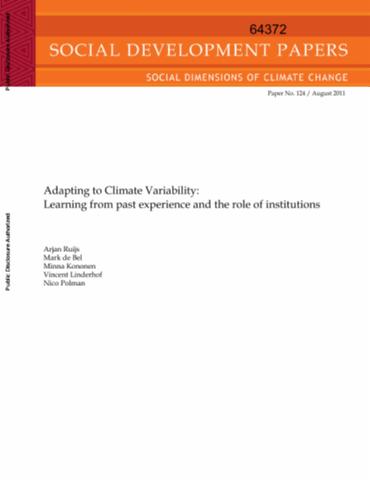Resource information
Adaptation to human-induced climate change is currently receiving a lot of attention in international development circles. But throughout human existence, natural resource-dependent people have exploited and coped with the effects of climate variability on the ecosystems from which they derive a living. Learning from this experience can help inform the design of appropriate policies for responding to human-induced climate change. This paper presents the results of a World Bank study which sought to better understand the role of local institutions in supporting adaptation to climate variability and change in Ethiopia, Mali and Yemen. The study raised three questions. First, what strategies have been adopted by rural households in the past to adapt to climate variability? Second, to what extent do institutions of various sorts assist households in adopting adaptation strategies? And third, what are the factors that prevent households from adopting appropriate adaptation strategies? For the purposes of this paper, institutions are defined as structured, formal or informal organizations. The study followed a three-step approach. First, drawing on original data from field surveys, focus group discussions and institutional stakeholder interviews, household vulnerability to climate variability was characterized in terms of its three constituent elements: exposure to climate-related shocks and stresses, and sensitivity and adaptive capacity in the face of such stressors. Sensitivity refers to the degree to which people are affected by climate variability and change. High levels of exposure and sensitivity and low levels of adaptive capacity generally result in high levels of vulnerability. But a high level of exposure need not necessarily result in a high level of vulnerability if the household's adaptive capacity is also high.


